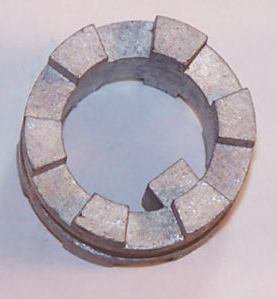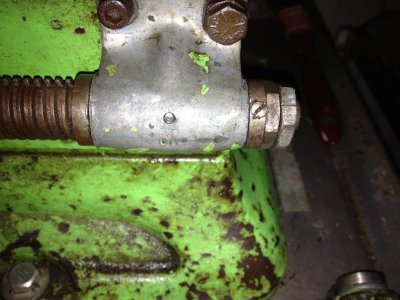- Joined
- Nov 24, 2017
- Messages
- 64
I figured out what at least one of the crunchy bits is. I found this picture of the little reversing gear online and realised that it is different to mine.
Mine has the key as a separate part where in the pic it is cast in.
My key can slide along the shaft a bit and engage with the bevel gear on either side.
I was wondering how this is supposed to work as it looked like an accident waiting to happen.
Close examination shows that someone has tried to solder it in place at some stage.
With the key loose it is also nearly impossible to assemble. So this explains a lot.
(Also one more piece I need to replace)
I'll be very proud of it if I get it back to nice working order again
David

Mine has the key as a separate part where in the pic it is cast in.
My key can slide along the shaft a bit and engage with the bevel gear on either side.
I was wondering how this is supposed to work as it looked like an accident waiting to happen.
Close examination shows that someone has tried to solder it in place at some stage.
With the key loose it is also nearly impossible to assemble. So this explains a lot.
(Also one more piece I need to replace)
I'll be very proud of it if I get it back to nice working order again
David


![DSCN0562[1].JPG DSCN0562[1].JPG](https://www.hobby-machinist.com/data/attachments/27/27140-24c762db7b6cd1d11d6da4d529363507.jpg)
